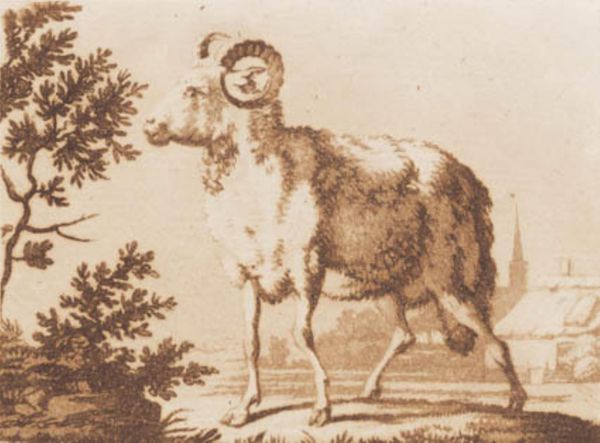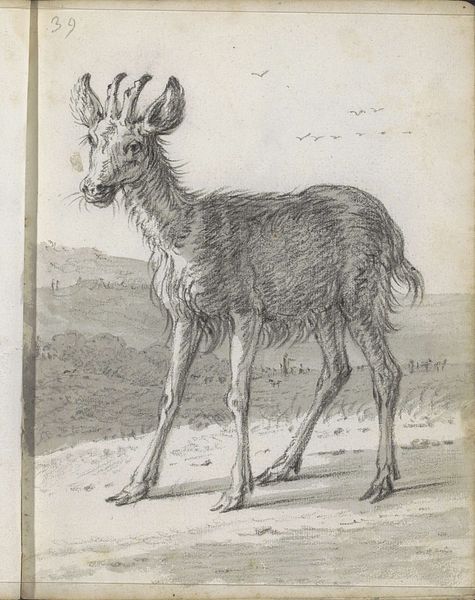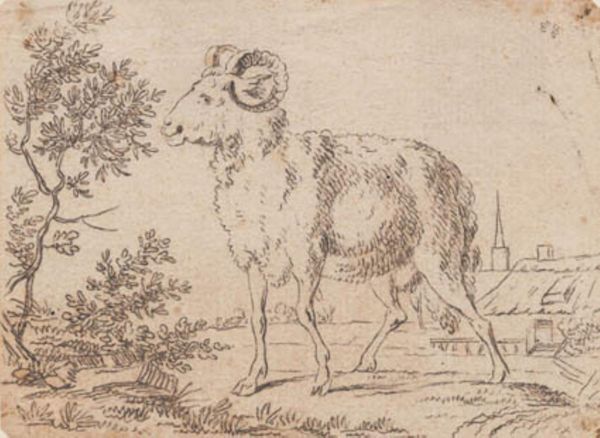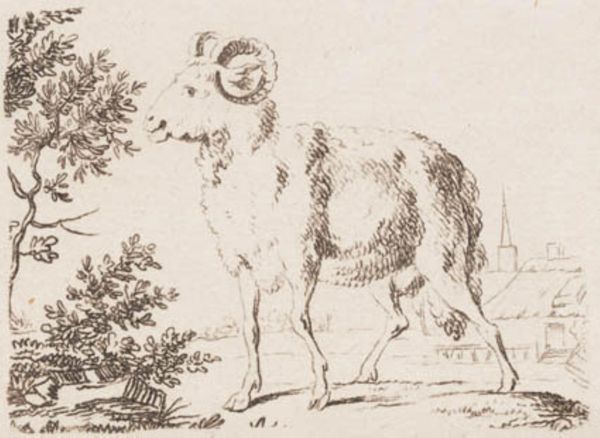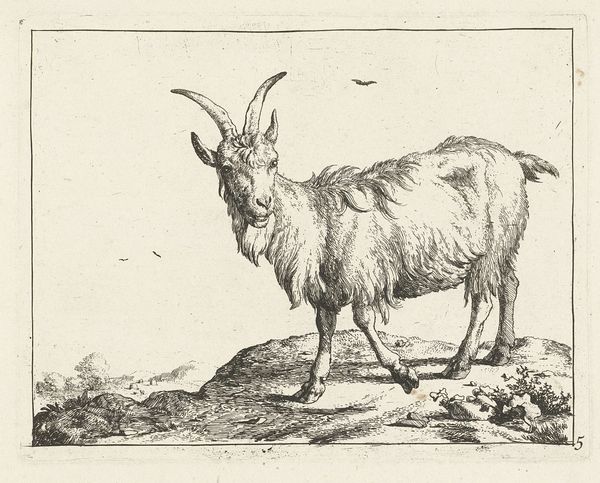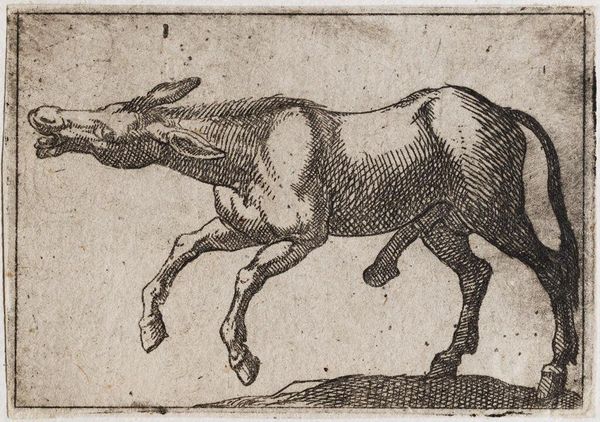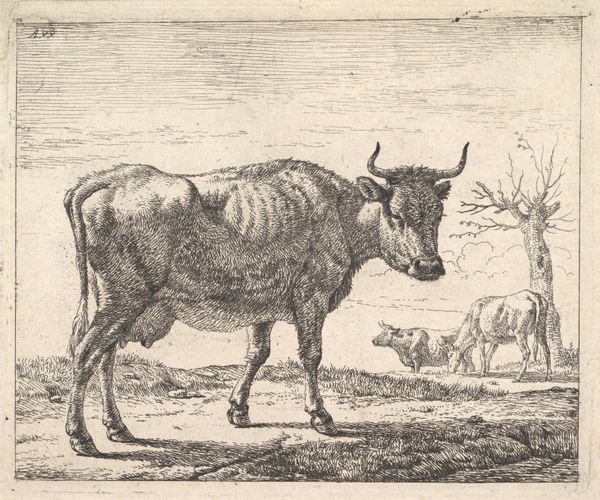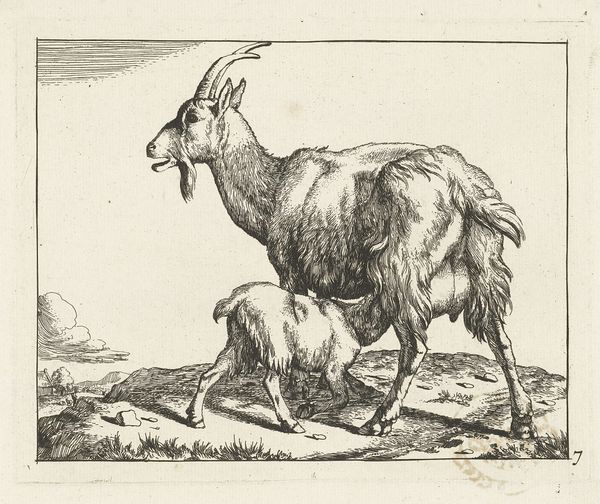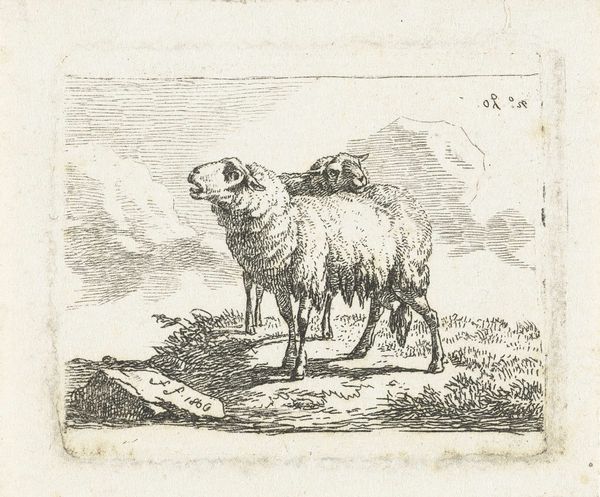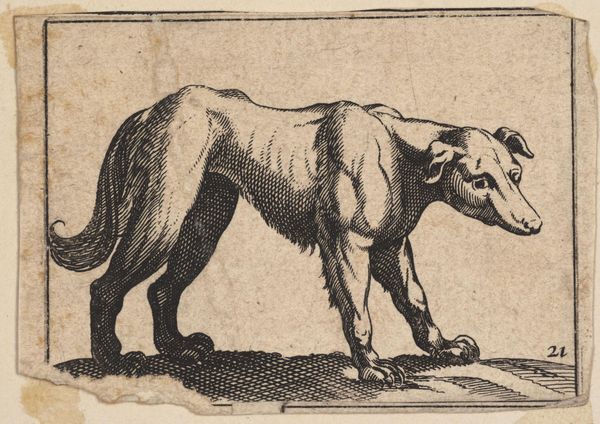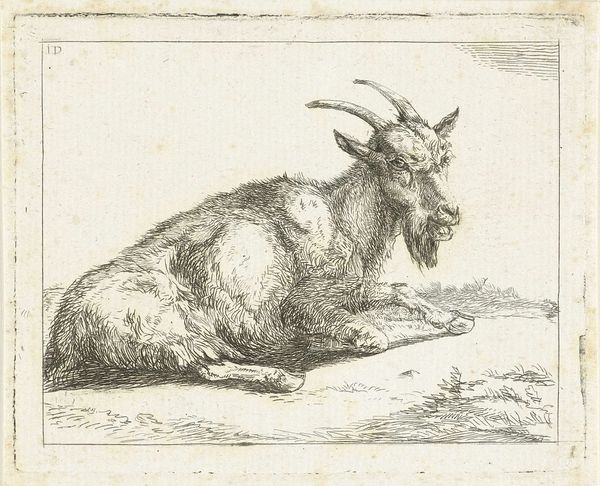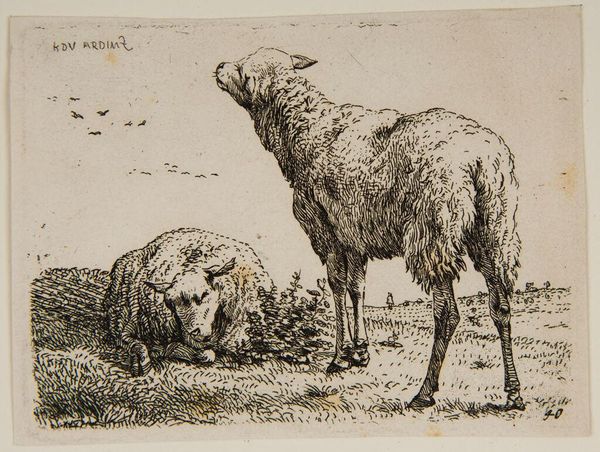
aquatint, print, etching, engraving
#
aquatint
# print
#
etching
#
landscape
#
engraving
Dimensions: 145 mm (height) x 218 mm (width) (bladmaal), 85 mm (height) x 114 mm (width) (plademaal)
Editor: Here we have "En Vædder," or "A Ram," made sometime between 1748 and 1831 by J.F. Clemens. It's a print that combines aquatint, etching, and engraving techniques. The detail is quite striking given the scale and the range of processes used to create it. What strikes you most about this image? Curator: I’m drawn to consider the social implications embedded within the printmaking process itself. Engraving, etching, and aquatint—these are labor-intensive techniques requiring skilled craftsmanship. Was this image intended for mass production, thereby democratizing access to art, or was it aimed at a wealthier clientele? Editor: That's a really interesting question. I hadn’t thought about who the intended audience would have been. Curator: Consider, too, the image itself. The ram is presented in a landscape. The use of these combined printmaking techniques – etching, engraving and aquatint – speaks to the intention of realism in the final image, attempting to elevate it from simple craft to high art. But doesn't the very nature of printmaking challenge those established hierarchies? Editor: It does seem to blur the lines, doesn’t it? The artistry is undeniable, but the potential for reproduction introduces a different element compared to a unique painting. The combination of those different techniques certainly must have democratized the final distribution as well. Curator: Exactly. By examining the means of production, we can unravel assumptions about value and access within the art world of Clemens' time. Were prints like this displayed in homes alongside original paintings, or were they viewed as a separate, more accessible form of artistic expression? Editor: So, looking at the materials and processes opens up a whole conversation about class, consumption, and the very definition of "art" back then? Curator: Precisely. And how those definitions were actively being shaped through the labor involved in creating images like this one. Editor: I will never look at a print the same way! Curator: Me neither! It is an illustration of cultural creation.
Comments
No comments
Be the first to comment and join the conversation on the ultimate creative platform.
